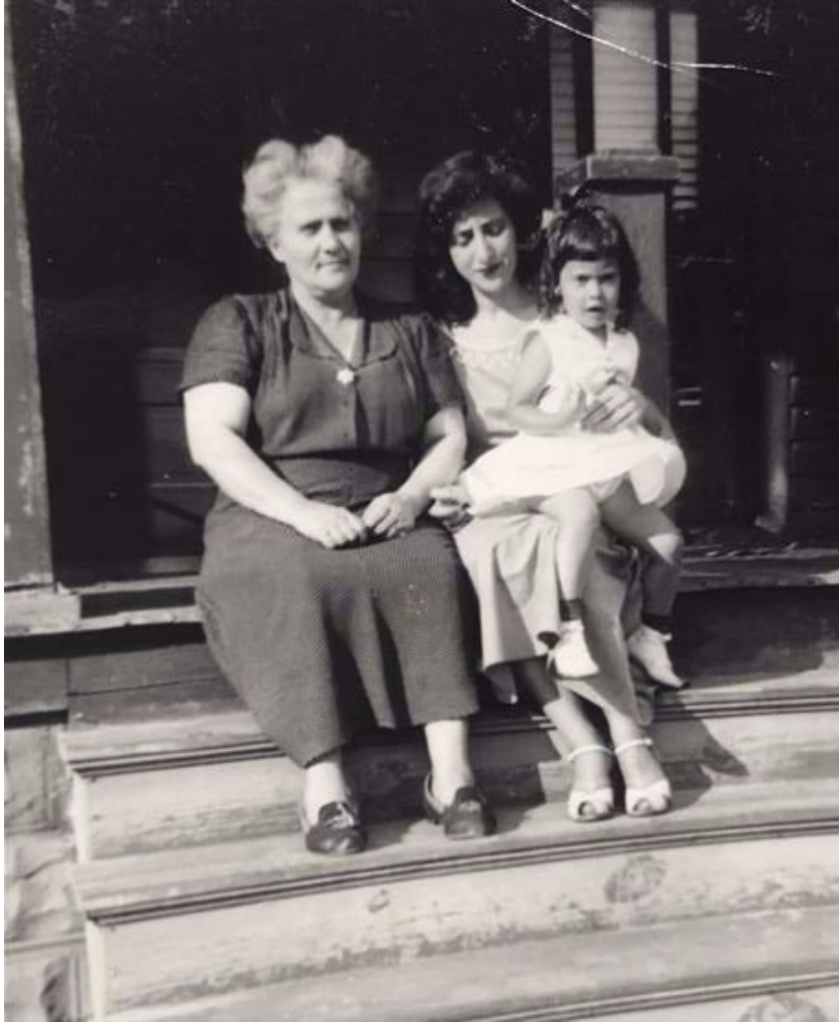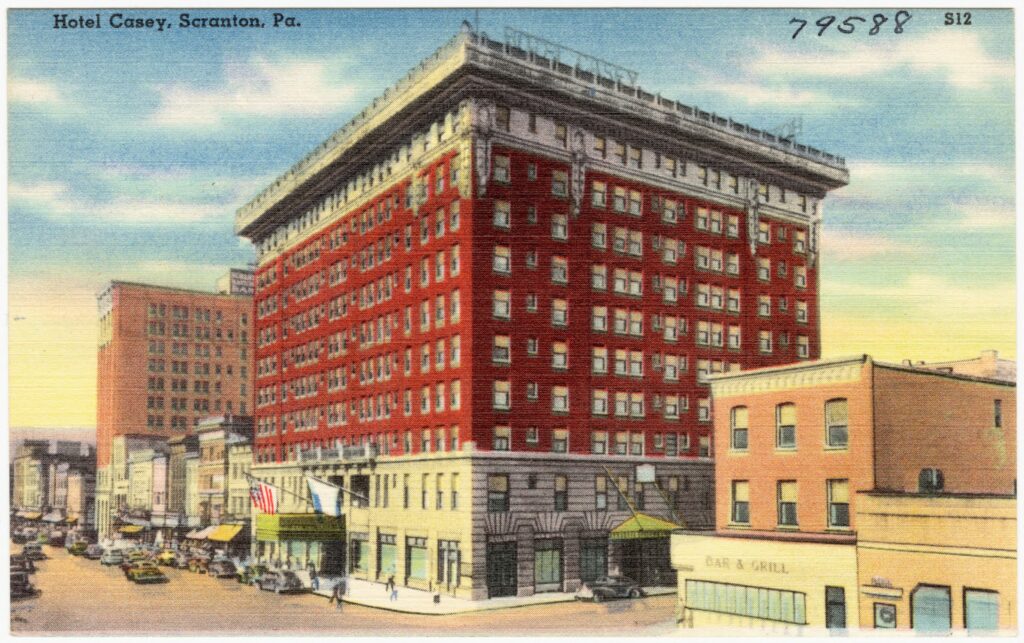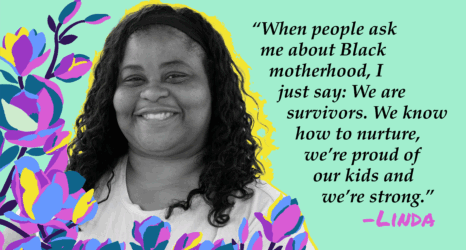Back in 1913, my Grandma Maggie was 17 when our hometown of Scranton, Pa., exploded with the energy of the women’s suffrage movement.

Women “street orators” preached women’s suffrage from the sideboards of model T Fords.
“Votes for Women” flags waved, horns honked, crowds cheered.
Suffragists climbed up onto stages at local movie houses to rally for the vote.
The newly formed “Lackawanna County Equal Franchise League” organized marches, parades and public meetings, with activists heading afterwards to the bustling Suffrage Lunch Room.
High school students saturated downtown with pro-vote leaflets—while local school teachers circulated petitions advocating for a “suffrage amendment” to the Pennsylvania constitution. Of a prominent West Scranton merchant who refused to sign the petition saying he “didn’t believe in it,” a local paper reported that “he has become the most unpopular man alive.”
During that boisterous three-year campaign, Scranton was decidedly not the town that time forgot. It was a state leader in the fight, in large measure because of the “grit, courage and determination” of its people—especially its women—qualities regularly hailed by native son and presidential hopeful Joe Biden.
At 17, Maggie, my maternal grandmother, would have been primed to join the movement, ready and willing to march. She was 11 in June 1907 when she and her mother boarded the Roma at the Port of Naples and headed for Ellis Island.
She was educated. She’d arrived in the U.S. literate and bilingual, reading and writing English as well as Italian. Cheered by the local press, she was named among the 24 members of the No. 16 school graduating class that was heading off to high school—at a time when only 10 percent of American youth attended high school.
She had a diverse circle of friends: At her birthday party in 1911, also covered by the local press, sixteen girls showed up—Italians but also a Murphy, a Weisberger and a Woodworth, evidence of an openness in her family to America beyond the insular Italian American immigrant community.
And Maggie was reputed to have been from something of a political family, prominent locally in their hometown of Castelgrande, Italy. Her father settled in West Scranton, where, after a stint working for a “macaroni company,” was able to open what became a bustling Italian-importing food store.
Maggie’s older brother Martin, to whom she was very close all her life, would become involved in electoral politics—as majority inspector, first district, 14th ward, for the local election board. He was also active in Italian men’s social clubs, quoted in the local press as a great advocate of “Americanization” and the promise of “his adopted country.”
Like many suffragists of the era, Maggie reportedly didn’t march alone, but headed downtown with cousins and others. I wonder if sometimes, Martin marched too. In Scranton, men enthusiastically supported the campaign for the woman’s vote joining the Lackawanna County Equal Suffrage League, chairing meetings, delivering rousing speeches, and marching.
Advocates for women’s suffrage saw voting as a family affair. Committed to ending voting in raucous saloons, they envisioned, in the words of one state suffrage association leader, a future where “fathers, mothers, daughters and sons go in families to vote as they would go to church.”

Maggie’s church—to which she was deeply devoted and in which she would be actively involved all her life—was St. Lucy’s Italian Catholic Church. It was founded in 1899 by her hero, Mother Francis Cabrini, who would later become the first Italian American saint. There was a lot of support in the church for suffrage—as illustrated by the responses of 15 of the state’s prominent Catholic clergy when the Pennsylvania Woman Suffrage Association asked for their opinions. Scranton Bishop M. J. Hoban offered limited support, insisting that it was an “outrage to deprive property-holding women of the right to vote on taxation and bonding.”
But Father P. J. Murphy, pastor of another Lackawanna County Church, was unequivocal:
“Men have no moral or legal right to deprive women of their citizenship and treat them like children, lunatics or idiots, as unfit to take part in a government by which they are governed.”
Acknowledging the power of the city’s suffrage activism, the Pennsylvania Woman Suffrage Association chose Scranton, then the third largest city in the state, as the site for its 46th annual convention in November 1914. The spirit of the women connected to that convention is captured in a photo featuring nearly 30 suffragists, standing proudly in front of the Hotel Casey, in dark dresses with white collars, dark hats sprouting ruffles and feathers, holding a worn “Votes for Women” banner. Many are stern-faced, some are smiling, one looks sheepishly gleeful.
Maggie is not in that photo. These women are older than she was. And these are the leaders, the organizers, the faces, the surviving representations of the fight that I learned Maggie joined with thousands of other anonymous women—and men—to get for women this most basic democratic right. She was literally a foot soldier in the first wave, like so many others. But like so many others, no photos hailing, marking or celebrating her involvement were ever taken—much less preserved.

In 1915, the Pennsylvania woman’s suffrage amendment was put to a popular vote. Lackawanna County‘s men came through with flying colors, voting 60 percent in favor, but the state’s voters did not follow suit.
By 1916, national leaders of the movement gave up on the state-by-state approach, believing that only a constitutional amendment would guarantee American women the right to vote.
As the fight for the vote made the dramatic move away from the streets of Scranton to the Capitol, Maggie’s life changed dramatically too.
One day, a dashing young man wandered into the Italian grocery store run by Grandma Maggie’s parents. They watched with alarm as the young man, Umberto, returned again and again, not to buy imported olive oil but to speak to the young woman in the store. That would be Maggie, a pearl in the land of coal—a petite, blue-eyed, ashen-haired, fair-complected, impassioned, headstrong young woman.
My mother was under the impression that it was love at first sight, but a love that Maggie’s parents were none too happy about.
“Who is this guy?” they wanted to know, “this big shot? What about his family? Where does he come from?”
They were put off by his aloofness, the arrogance in his bearing, the lingering sense of entitlement that they didn’t understand.
“Your grandfather was a genius,” I’d been told repeatedly through the years. Only later was it allowed that he was also “mean,” “terrible to your grandmother,” and drank a lot.
As a young boy, Umberto had shown himself to be a genius with the carving knife, a novice furniture artist, a wood sculptor, with so much talent that he was plucked from his birthplace of Pontecorvo, just south of Rome, to move to Paris to apprentice with a mastri in the field. He soon became an inlaid specialist, a master himself, working in birch and mahogany, making rich people’s furniture. An accomplished child musician too, he brought along his violin, which brought more accolades.
Umberto couldn’t help but develop a sense of his own specialness, an expectation that his would be a most extraordinary life. But that’s not how things turned out. For reasons that got lost in time, at the age of 17, in 1912, he boarded the Ancona at the Port of Naples and headed for Ellis Island. Unlike the millions of immigrants who came with family, or to be reunited with family, Umberto came alone.
Maggie’s parents’ protestations were to no avail. My mother suspected that things had gotten so bad between Maggie and her parents over Umberto that the two gave up trying to get their support and eloped. She was right. And their elopement did what couples never want their secret elopements to do; it made the pages of the Scranton Republican.
A convoluted tongue-in-cheek article tracks Umberto’s journey “with his sweetheart Margaret” from Scranton to New Jersey, and back to Scranton again, to two marriage bureaus (their Jersey license was no good in Pennsylvania), to St. Lucy’s rectory where they finally were married in a private ceremony at 8 p.m. on January 11, 1916.
The same article outed them as living together at the same address before they married. While Maggie’s parents were furious about the marriage, at least one relative was clearly in her corner. Maggie and Umberto lived on one side of a double house; Martin, his wife and their new baby lived on the other.
Their early married days, reportedly, were heady ones. Umberto got involved with a prominent Scranton family and their wealthy friends, who put in regular orders for customized wooden furniture. And he joined a vibrant community of local string musicians. Maggie enjoyed their new friends, rode around with Umberto in his Willys-Knight jeep-like car, and fed the hungry musicians he regularly brought home.
“Your grandparents, they lived it up,” an uncle told me. “They lived the high life, with music, food and wine.”
But their heyday didn’t last. Trouble came and never left. The year they were married, the babies started to come. By the time the Depression sent Scranton’s economy crashing, they had five mouths to feed. Six more babies would come, the last, in 1936. By my calculations, from the ages of about 21 to 41, Maggie was either pregnant or nursing for all but four years.
Umberto’s work dried up—no more orders for handmade wooden furniture. He lost money he had lent to St. Lucy’s. They had to move. Grandpa took on intermittent construction jobs. Martin helped with expenses.
And Maggie picked up the slack, which my mother found devastating to witness:
“It would be ninety degrees out and there Grandma would be, pregnant, on swollen ankles, in a worn housedress, carrying a suitcase full of dry goods—linens, dish towels, bath towels, toothpaste—that she had to sell from door to door.”
Umberto did not take to fatherhood, or husband-hood for that matter, and his disregard for his family in time turned into outright hostility. Maggie became repulsive to him in her pregnant state.
“He called her a cow,” my mother said, “told her to get out of his sight. He was terrible to her.”
Another relative put it exactly the same way: “He never said a kind word to her.”
And Umberto’s drinking got worse and worse. So did their fighting. They screamed and yelled at each other. He became totally antisocial, retreating for hours into “the darkness of his dismal attic,” said my mother, endlessly, angrily playing his violin.
In 1941, at age 44, my Grandpa died, from duodenal ulcers and heart disease. He left Maggie alone with six children under the age of 18—her youngest, five years old.
Growing up, I’d heard repeatedly from my mother about Maggie’s suffragist days. A niece recalled her “Aunt Maggie” regularly bragging that “I helped women get the vote.” But it is a testament to how little that family lore meant to me as a girl in the late 1950s and early 1960s that I had no interest, awareness or appreciation for that revolutionary time in Maggie’s life. It seemed like ancient history. I loved my grandmother, she was kind to all of us, but she never inspired me. I knew her when she was an older woman—dispirited, spent.
As I became a journalist and activist for women’s rights, learning about women’s history, I finally began to give Maggie her due. But for a long time, I could not understand how the life of the woman I saw as a fiercely independent young suffragist could have gone so terribly wrong.
Why did she have so many children? Was she as happy at the arrival of baby number five or number nine as she was at baby number one? Did she feel she had no control over her own body? Did that enrage her? How could she live all those years with a remote, denigrating, alcoholic, abusive husband?
In some ways, I blamed her. I was determined not to share her fate. I would not marry someone who was abusive to me. I would not have 11 children. I would advocate for birth control and abortion, against sexual abuse, for drastic change in the Catholic Church, which countenanced the subjugation of women like my grandmother.
Today, I realize how incredibly harsh my judgement was. Today I wonder, after all Maggie’s responsibilities were met—children born and some buried, wounds healed, dreams nurtured, meals cooked, beds made, clothes ironed, house cleaned, dry goods sold, church work done, besides marching for the vote, was she proud of what she had achieved?
I hope she was. I am.
The last time I saw Grandma Maggie she was in the hospital. She was diabetic, gangrene had set in, and one of her legs had been amputated. I was visiting with my mother when Maggie called for me. She grabbed my hand and pulled me toward her, tears pooling in her tired blue eyes.
“My leg hurts,” she said. I realized with a shudder that she’d forgotten.
I was 16; no adult was nearby to rescue me. I reminded her about her “sugar,” her black toe, that the doctors said this was for the best.
“My leg?” she said, incredulous. She turned her head away from me and dropped my hand. I tried not to cry. I said things would be fine. But they weren’t fine. My Grandma died right after that, at 70 years old.
Maggie left my mother the house and some worldly possessions, and my mother left most of hers—and what was left of Grandma’s—to me. As I was looking through those items one day, I discovered that I had I inherited a burial certificate. But it was no ordinary burial certificate. It was for Grandma, but not her whole body. It was for that phantom leg.
After getting past being horrified, aghast then amused, a kind of reverence set in. Here was a totem, a reminder of the journey that took Grandma Maggie from Castelgrande to Ellis Island to join the suffragists in Scranton—to persevere through love and disillusionment, triumph and heartache, that leg that never got to finish its march.
Of all the granddaughters Maggie left behind—medical providers, teachers, businesswomen and a scientist searching for an Alzheimer’s cure—I’m the only one who chose to become a public voice for women’s rights. So it’s odd and fitting, in a crazy kind of way, that this document belongs to me.





